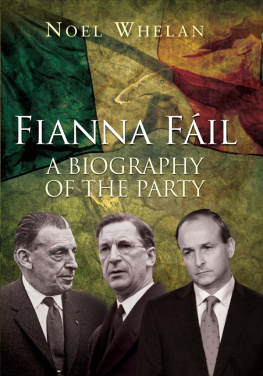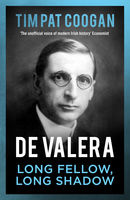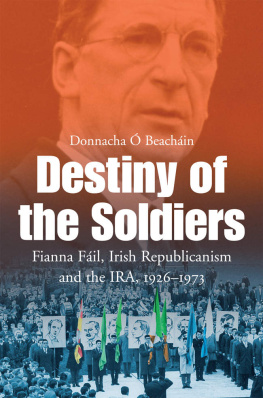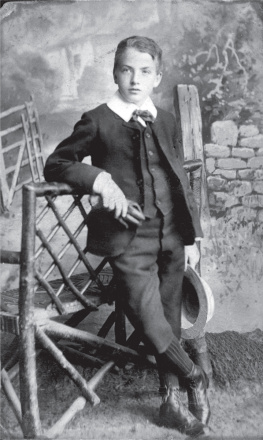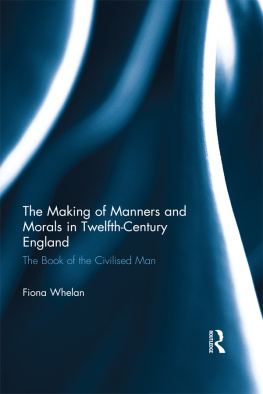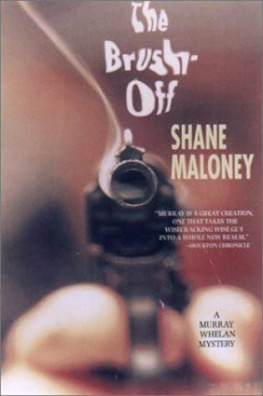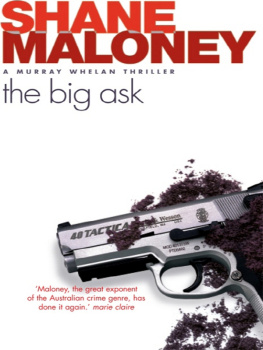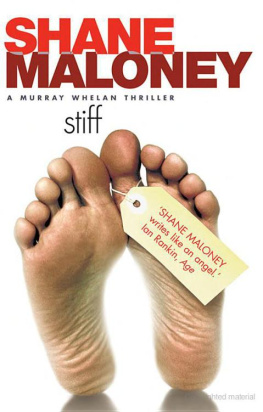Noel Whelan - A History of Fianna Fáil: A Biography of the Party
Here you can read online Noel Whelan - A History of Fianna Fáil: A Biography of the Party full text of the book (entire story) in english for free. Download pdf and epub, get meaning, cover and reviews about this ebook. year: 2011, publisher: Gill & Macmillan, genre: Politics. Description of the work, (preface) as well as reviews are available. Best literature library LitArk.com created for fans of good reading and offers a wide selection of genres:
Romance novel
Science fiction
Adventure
Detective
Science
History
Home and family
Prose
Art
Politics
Computer
Non-fiction
Religion
Business
Children
Humor
Choose a favorite category and find really read worthwhile books. Enjoy immersion in the world of imagination, feel the emotions of the characters or learn something new for yourself, make an fascinating discovery.
- Book:A History of Fianna Fáil: A Biography of the Party
- Author:
- Publisher:Gill & Macmillan
- Genre:
- Year:2011
- Rating:4 / 5
- Favourites:Add to favourites
- Your mark:
- 80
- 1
- 2
- 3
- 4
- 5
A History of Fianna Fáil: A Biography of the Party: summary, description and annotation
We offer to read an annotation, description, summary or preface (depends on what the author of the book "A History of Fianna Fáil: A Biography of the Party" wrote himself). If you haven't found the necessary information about the book — write in the comments, we will try to find it.
Noel Whelan, the distinguished political commentator and columnist, traces the partys fortunes from its foundation by amon de Valera and Sean Lemass in the 1920s right up to the present day.
Noel Whelan: author's other books
Who wrote A History of Fianna Fáil: A Biography of the Party? Find out the surname, the name of the author of the book and a list of all author's works by series.
A History of Fianna Fáil: A Biography of the Party — read online for free the complete book (whole text) full work
Below is the text of the book, divided by pages. System saving the place of the last page read, allows you to conveniently read the book "A History of Fianna Fáil: A Biography of the Party" online for free, without having to search again every time where you left off. Put a bookmark, and you can go to the page where you finished reading at any time.
Font size:
Interval:
Bookmark:


I t was late October 2010, and there was something appropriate about the fact that the event was being held in the audio-visual centre in the modern Leinster House extension, rather than the traditional Fianna Fil party rooms on the fifth floor of Leinster House itself. There was also something appropriate, poignant perhaps, about the fact that the gathering was called the Lemass group. As one of those responsible for launching the original Fianna Fil machine in the late 1920s and early 30s, redeveloping it in the 1950s and leading it in the 1960s, Sen Lemass would have been horrified by what I was about to tell the gathering.
The Lemass group had been set up by a handful of dissident back-benchers. Gradually, in the way that Fianna Fil leaderships have traditionally managed internal affairs, the group had been gathered into the partys formal structure. Of late even ministers had been invited to address the gathering, most notably Brian Lenihan, Minister for Finance, who had spent two hours the previous week in robust encounters with the deputies about the policies he had implemented to address the fiscal and banking crisis. The format, even the setting, with its tiered seating, lent itself to more fruitful exchanges than the set pieces that the weekly meeting of the parliamentary party had become.
I was somewhat nervous as I rose to speak. I had been surprised ten days earlier to get the invitation. Although I had once worked for the party, it had been years since I had been asked to speak at a party meeting. I was nervous too because, as I reminded them at the start, I, like my father before me, had been an unsuccessful candidate for the party, he in Wexford in 1977, I in Dublin South-East twenty years later. This left me feeling like one of those retired or fired generals who used to irritate Dick Cheney, former Vice-President of the United States, so much. Cheney complained about how these armchair critics, safely embedded in TV studios, dared to lecture those on the battlefield about how they should conduct the war.
A further reason for my nervousness was that, even though in recent years I had carved out a niche as a relatively independent political analyst in the media, I was, after all, someone from the Fianna Fil gene pool: I had grown up in a Haughey house in the 1970s and early 80s, when Fianna Fil homes were divided into Haughey houses and Lynch houses, or later again into Haughey houses and Colley-OMalley houses. I had therefore some empathy for the political distress these Fianna Fil back-benchers were feeling; many of them also were second or third-generation people. A good few had fathers who had been TDS before them; a few even had grandfathers who had served in the Oireachtas. My grandfather had been a cumann secretary for much of the later part of his life. My father had been a cumann secretary in his twenties, a comhairle ceantair (district council) secretary in his thirties and a constituency chairperson and director of elections from his forties to his mid-sixties. I had a sense that these deputies also felt that their grandfathers or fathers, like mine, would turn in their graves at some of the things the party had been doing in recent times.
There was a real sense in the room, as one suspects there was at many Fianna Fil gatherings around this time, that the present generation of political leaders had squandered the fine inheritance that had been passed on to them. A cadre of able young people, those accidental politicians, had built Fianna Fil from the ruins of a bitter civil war and from the electoral defeats suffered by the third Sinn Fin, as historians are wont to call it. They had developed it into one of the most effective political organisations ever to operate in any western democracy. After decades of political dominance and the exercise of power in the interest of the national good, as they saw it, the party was now indicted for economic recklessness, and its support was on the brink of collapse. Like some errant heir, the present leaders had gambled away the family treasures, pillaged the family finances, allowed the party organisation to rot and neglected the gardens, where the grass roots were once so carefully tended.
I was nervous too because what I was about to say was going to be blunt. I took a deep breath and told them that I had recently reviewed all polling data published in the previous eighteen months, had mapped the 2009 local election results to Dil constituencies, had assessed the impact of boundary re-drawings, had allowed for likely retirements, had looked at the line-up of potential candidates in each of the forty-three constituencies, and had come with one important piece of advice. I told them that the following weekend they should each find some time to sit down and frankly discuss with their wives, husbands or partners how they would psychologically, financially and politically cope with losing their Dil seatbecause that was the fate I saw awaiting more than half of them.
At that point, in October 2010, I and other political commentators had assessed Fianna Fils national support at about 24 per cent. From that I had concluded that even with a fair wind at its back Fianna Fil could not win more than forty-five seats if an election were called any time soon. The party was already well below the tipping-point where it would lose the seat bonus it had achieved in previous elections because of its size.
Surely things will get better when the election actually comes round, one or two of the deputies in my audience said; but I warned them that there was no reason to assume that there was a floor under Fianna Fils vote. There was every possibility that it would fall even further. I felt that the party was being complacent about its survival prospects and reminded them how a former Fine Gael director of elections, Frank Flannery, had bluntly warned his party, after its disastrous 2002 general election, that it should not assume that just because it had always been a large feature of national life that situation would continue. Fianna Fil, I added, now risked suffering the same fate as the Irish Press and other supposed national institutions.
As I came to the end of my presentation one of the deputies joked that what they needed after this political analysis was to hear from a bereavement counsellor. The next time I spoke to that deputy was three months later, when he rang me in a state of panic to ask me my view of his prospects. The election was about to be called, and that day he had been handed polling data by head office that suggested that he had no chance of holding on to his seat. The new party leader was encouraging him to join the hordes of his colleagues who were retiring, so that his running-mates seat might be saved.
The sequence of events and confluence of factors that had brought Fianna Fils vote to a historic low point by that autumn of 2010 will fascinate historians and political scientists for years to come. Later events, which caused it to fall even further in opinion polls a few weeks later, will be equally compelling. How could a party that had risen so high so quickly, and had stayed up for so long, fall so low, and so suddenly?
By the end of 2010 Fianna Fil had been in government for 60 years of its 84-year existence. Since 1932 it had never polled less than 39 per cent in a Dil election. Until 1990 it had won all presidential elections. Until 2004 it had always been the largest Irish party in the European Parliament. Until 2009 it had always been by far the largest party in local government.
Font size:
Interval:
Bookmark:
Similar books «A History of Fianna Fáil: A Biography of the Party»
Look at similar books to A History of Fianna Fáil: A Biography of the Party. We have selected literature similar in name and meaning in the hope of providing readers with more options to find new, interesting, not yet read works.
Discussion, reviews of the book A History of Fianna Fáil: A Biography of the Party and just readers' own opinions. Leave your comments, write what you think about the work, its meaning or the main characters. Specify what exactly you liked and what you didn't like, and why you think so.

